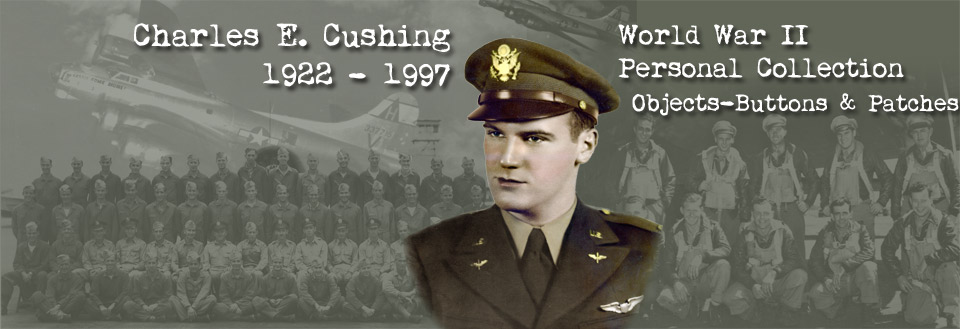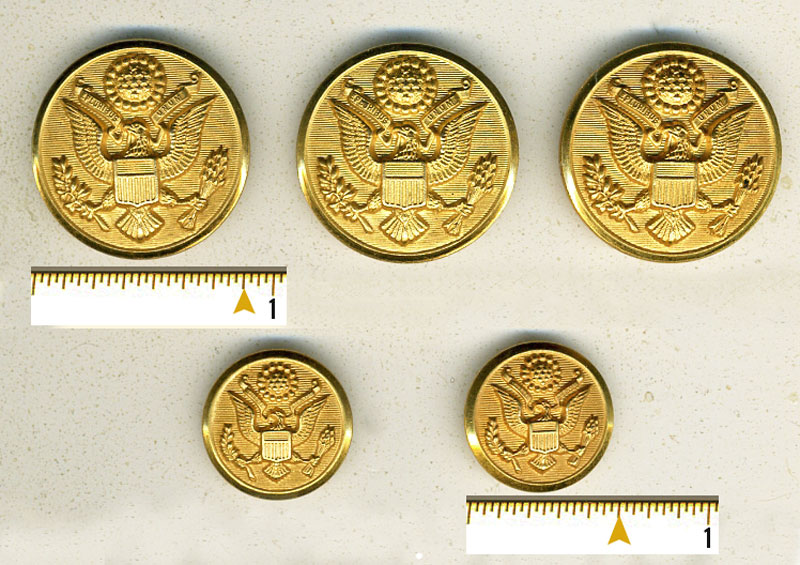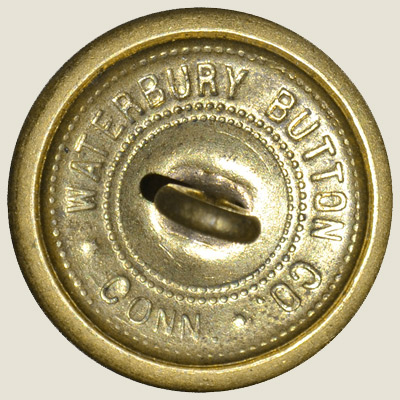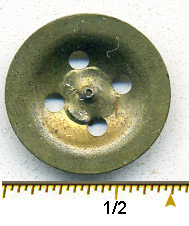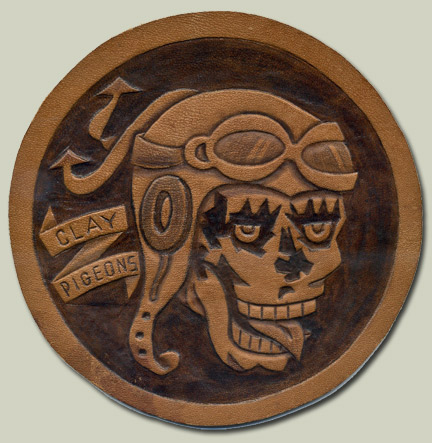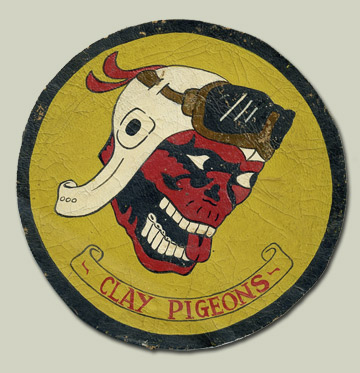|
Shoulder Sleeve Patches - 8th Army Air Force
embroidered shoulder patches, 2½ inches in diameter.
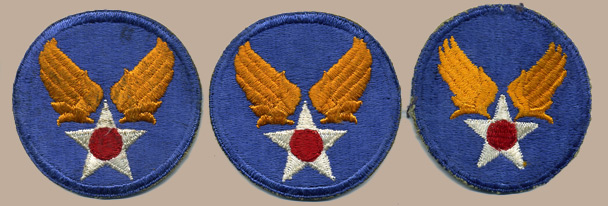
Hap Arnold Wings patch, the standard HQ Army Air
Forces patch worn by most stateside personnel.
The shoulder sleeve insignia worn by all personnel
of the Army Air Forces (AAF) wherever stationed was approved on 23
February 1942. The patch was designed by Mr. James T. Rawls, an artist and
a member of General Arnold's staff. He made many designs, most
incorporating pilot wings, but Arnold rejected them all. Rawls, dejected
by his lack of success, was shown a picture of British Prime Minister
Winston Churchill giving his well-known "V for Victory" sign. Rawls made a
quick sketch bending the wings up, and Arnold said, "That's just what I
wanted." Arnold, incidentally, is said to have designed the first Air
Force pilot wings in 1917 when he was a major.
On 2 March 1943, shoulder
sleeve insignia were authorized for each overseas air force, and the
winged star was limited to those AAF personnel not in overseas commands.
On 25 June 1943, personnel in all air forces, including those in the
United States, were authorized distinctive insignia, and only Headquarters
AAF and a few other independent commands continued to wear the winged
star. It is sometimes known as the Hap Arnold emblem, named for General
Henry H. Arnold who commanded the AAF in World War II. The insignia was
described in regulations as follows: On an ultramarine disk (2-5/8" dia.)
is imposed in the lower segment a White Star (1-1/8" point to point) with
a red disk superimposed and covering the the entire center of the Star.
Surmounting the Star are two stylized wings extending upward and outward
at a 45 degree-angle. The ultramarine disk represents the medium in which
the Air Forces operated, and the white star with red disk was the
identifying symbol of U.S. Army and Navy airplanes since 1921. (The red
disk was removed from aircraft markings in 1942 to prevent confusion with
Japanese insignia.) The golden wings symbolize victorious operation.
Although the patch is no longer worn on Air Force uniforms, the design
appears on U.S. Air Force uniform buttons. (Patch
information from U.S. Air Force Fact Sheet.)
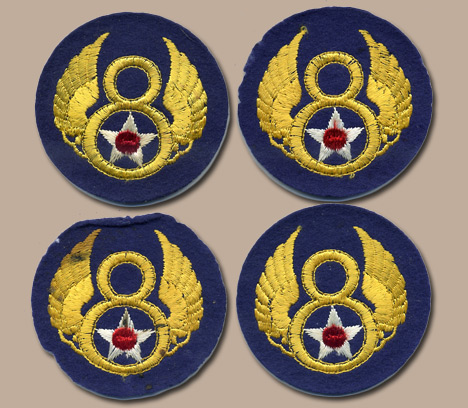
8th Army Air Force shoulder sleeve patch.
Double-scalloped design under wings. Some
other styles are single-scalloped. See variations
here.
The Mighty Eighth Army Air
Force began on 19 January 1942 and was activated on 28 January 1942 at the
Chatham Armory in Savannah, Georgia. Located at Hunter Field, Colonel Asa
N. Duncan was the first commander. Pearl Harbor had just been bombed about
a month and a half earlier.
Brigadier General Ira C.
Eaker took the Eighth Air Force Bomber Command Headquarters to England the
next month and located at High Wycombe, about 40 miles west of London and
on the road to Oxford. In May 1942 Command of the 8th Air Force was
assumed by Major General Carl A. `Tooey' Spaatz. He established the 8th
Air Force Headquarters at Bushy Park (Teddington, Middlesex), 15 miles
west southwest of the center of London on 25 June 1942.
Shortly after the birth of
the 8th AAF at Savannah, Joseph A. `Joe' Stenglein, 1st Lieutenant and
pilot, in the 8th Bomber Command was on the way to the United Kingdom and
in charge of 1,000 officers and men making the transition from Georgia
into the United Kingdom as staff for the 8th Air Force. Joe knew the High
Wycombe Abbey well as the main Headquarters building of the 8th AAF. Joe
served at the Widewing headquarters in the London area and then became
Commanding Officer of the organization which was to become the 25th Bomb
Group at Watton, north of London.
General James H. Doolittle
assumed command of the 8th AAF on 6 January 1944.
Before 1945 rolled around
and the war in Europe was over (May 7, 1945) with the surrender of the
Germans, approximately 350,000 officers and men had served in the 8th AAF
during the three year or so period in which the Americans participated in
the European Theater of Operations. (Information
from the 8th Army Air Force Historical Society.)
Read about
the history of the 8th Army Air Force |
